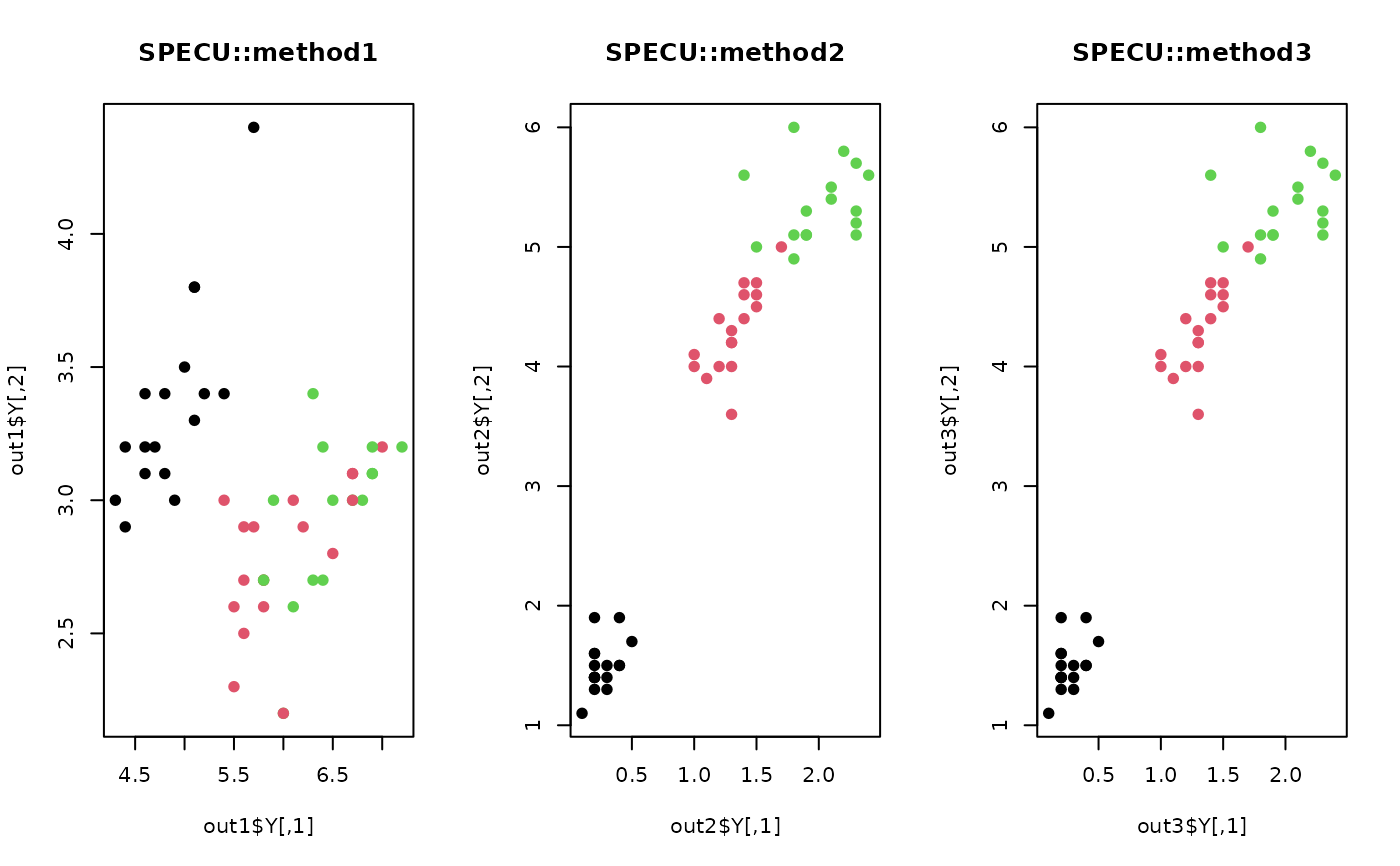SPEC algorithm selects features from the data via spectral graph approach. Three types of ranking methods that appeared in the paper are available where the graph laplacian is built via RBF kernel.
Arguments
- X
an \((n\times p)\) matrix or data frame whose rows are observations and columns represent independent variables.
- ndim
an integer-valued target dimension.
- sigma
bandwidth parameter for RBK kernel of type \(S_{i,j} = \exp(-\|x_i - x_j \|^2 / 2\sigma^2 )\).
- ranking
types of feature scoring method. See the paper in the reference for more details.
- preprocess
an additional option for preprocessing the data. Default is "null". See also
aux.preprocessfor more details.
Value
a named list containing
- Y
an \((n\times ndim)\) matrix whose rows are embedded observations.
- sscore
a length-\(p\) vector of spectral feature scores.
- featidx
a length-\(ndim\) vector of indices with highest scores.
- trfinfo
a list containing information for out-of-sample prediction.
- projection
a \((p\times ndim)\) whose columns are basis for projection.
References
Zhao Z, Liu H (2007). “Spectral Feature Selection for Supervised and Unsupervised Learning.” In Proceedings of the 24th International Conference on Machine Learning - ICML '07, 1151--1157.
See also
Examples
# \donttest{
## use iris data
## it is known that feature 3 and 4 are more important.
data(iris)
set.seed(100)
subid = sample(1:150,50)
iris.dat = as.matrix(iris[subid,1:4])
iris.lab = as.factor(iris[subid,5])
## try different ranking methods
mysig = 6
out1 = do.specu(iris.dat, sigma=mysig, ranking="method1")
out2 = do.specu(iris.dat, sigma=mysig, ranking="method2")
out3 = do.specu(iris.dat, sigma=mysig, ranking="method3")
## visualize
opar <- par(no.readonly=TRUE)
par(mfrow=c(1,3))
plot(out1$Y, pch=19, col=iris.lab, main="SPECU::method1")
plot(out2$Y, pch=19, col=iris.lab, main="SPECU::method2")
plot(out3$Y, pch=19, col=iris.lab, main="SPECU::method3")
 par(opar)
# }
par(opar)
# }